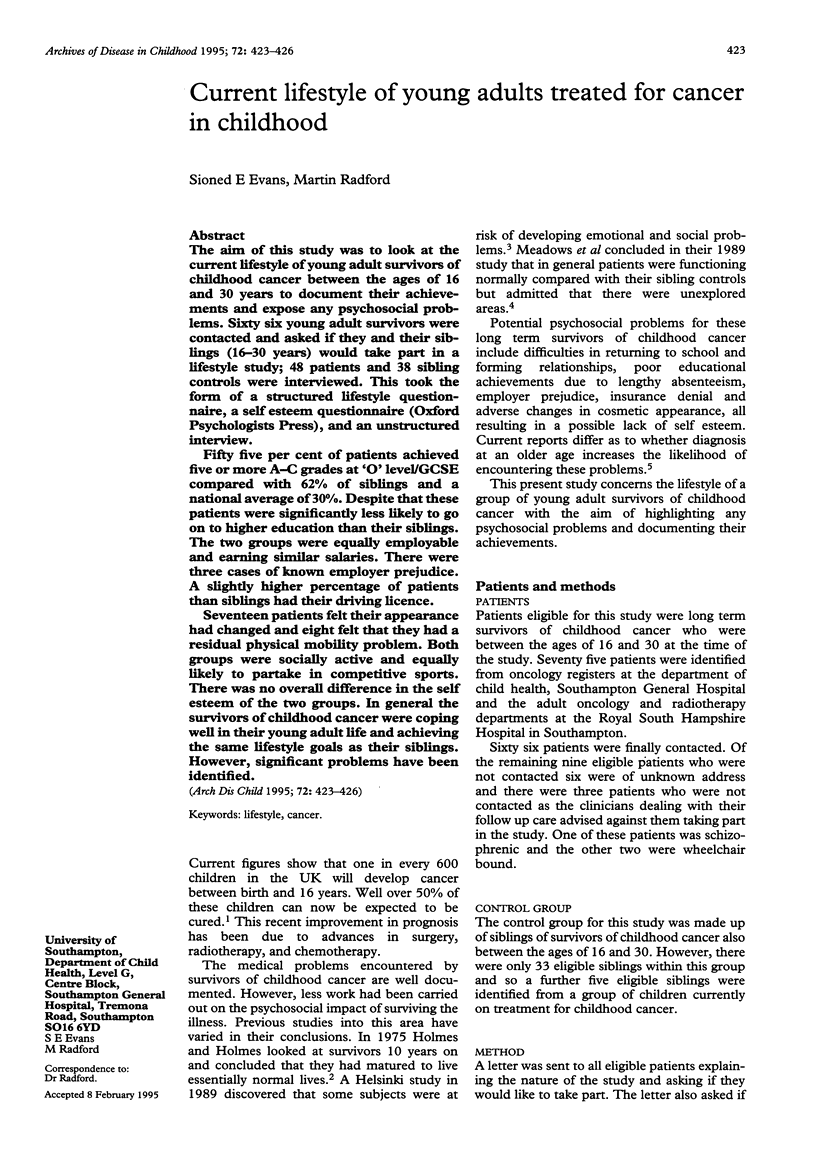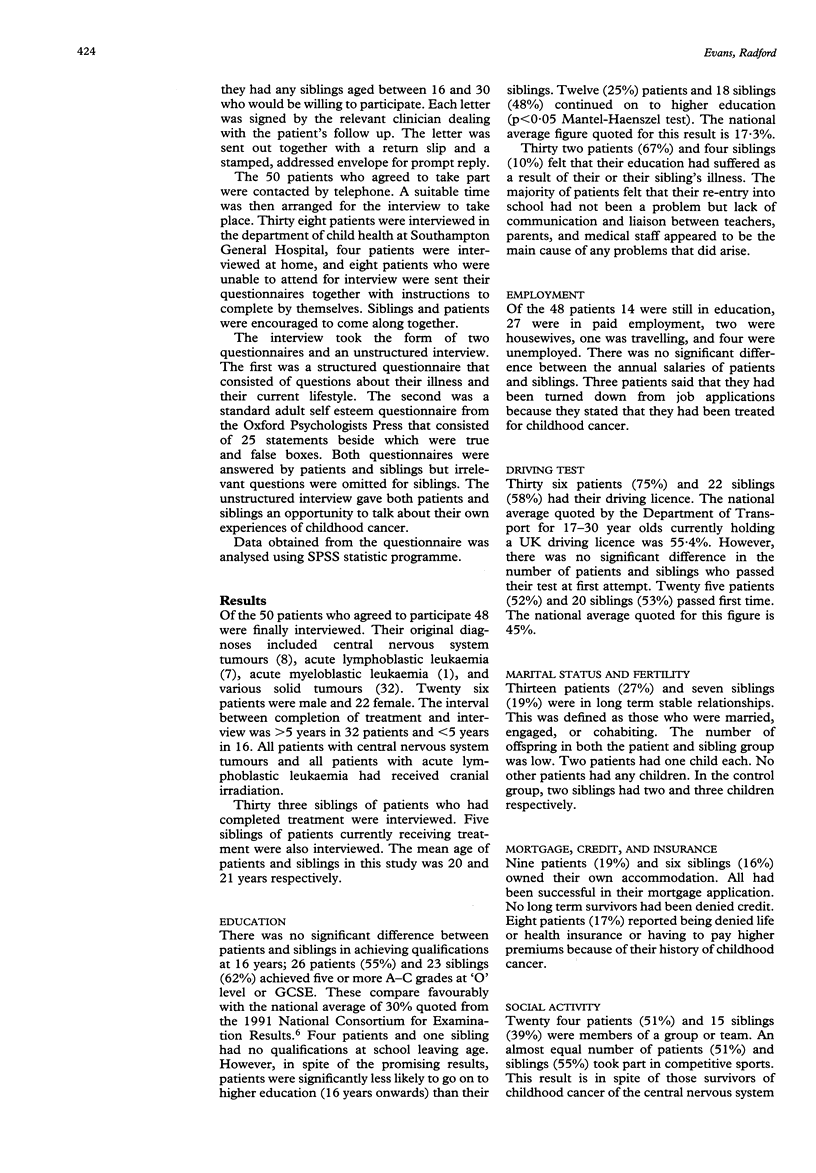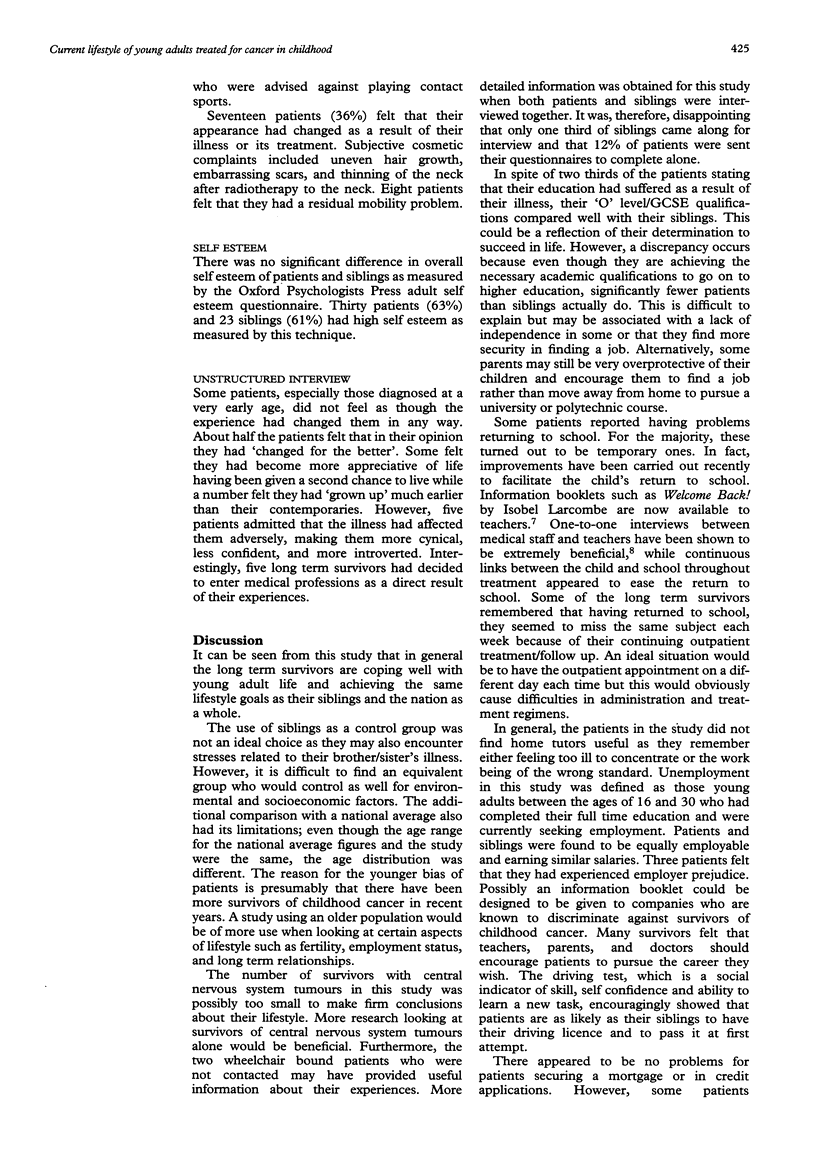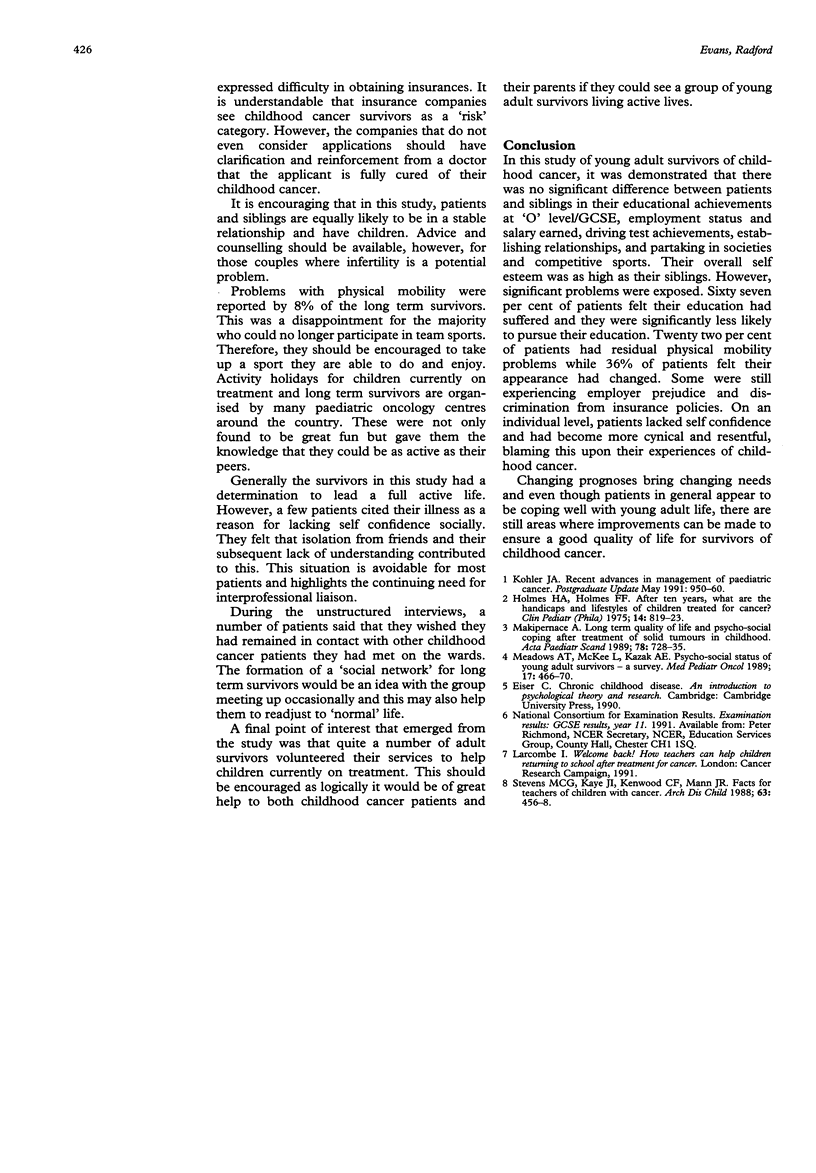Abstract
The aim of this study was to look at the current lifestyle of young adult survivors of childhood cancer between the ages of 16 and 30 years to document their achievements and expose any psychosocial problems. Sixty six young adult survivors were contacted and asked if they and their siblings (16-30 years) would take part in a lifestyle study; 48 patients and 38 sibling controls were interviewed. This took the form of a structured lifestyle questionnaire, a self esteem questionnaire (Oxford Psychologists Press), and an unstructured interview. Fifty five per cent of patients achieved five or more A-C grades at 'O' level/GCSE compared with 62% of siblings and a national average of 30%. Despite that these patients were significantly less likely to go on to higher education than their siblings. The two groups were equally employable and earning similar salaries. There were three cases of known employer prejudice. A slightly higher percentage of patients than siblings had their driving licence. Seventeen patients felt their appearance had changed and eight felt that they had a residual physical mobility problem. Both groups were socially active and equally likely to partake in competitive sports. There was no overall difference in the self esteem of the two groups. In general the survivors of childhood cancer were coping well in their young adult life and achieving the same lifestyle goals as their siblings. However, significant problems have been identified.
Full text
PDF



Selected References
These references are in PubMed. This may not be the complete list of references from this article.
- Holmes H. A., Holmes F. F. After ten years, what are the handicaps and life styles of children treated for cancer? An examination of the present status of 124 such survivors. Clin Pediatr (Phila) 1975 Sep;14(9):819–823. doi: 10.1177/000992287501400906. [DOI] [PubMed] [Google Scholar]
- Makipernaa A. Long-term quality of life and psychosocial coping after treatment of solid tumours in childhood. A population-based study of 94 patients 11-28 years after their diagnosis. Acta Paediatr Scand. 1989 Sep;78(5):728–735. doi: 10.1111/j.1651-2227.1989.tb11134.x. [DOI] [PubMed] [Google Scholar]
- Meadows A. T., McKee L., Kazak A. E. Psychosocial status of young adult survivors of childhood cancer: a survey. Med Pediatr Oncol. 1989;17(6):466–470. doi: 10.1002/mpo.2950170523. [DOI] [PubMed] [Google Scholar]
- Stevens M. C., Kaye J. I., Kenwood C. F., Mann J. R. Facts for teachers of children with cancer. Arch Dis Child. 1988 Apr;63(4):456–458. doi: 10.1136/adc.63.4.456. [DOI] [PMC free article] [PubMed] [Google Scholar]


